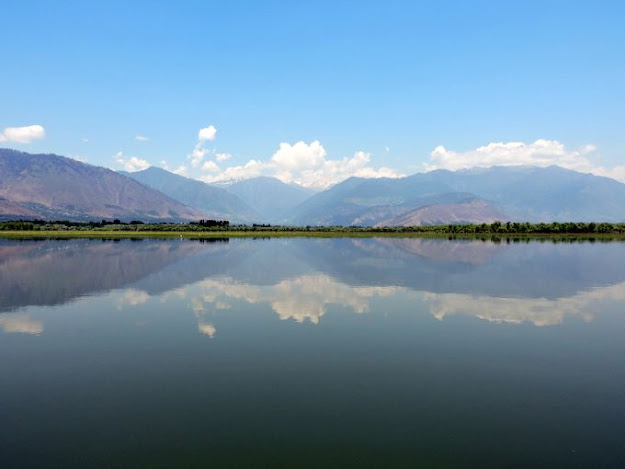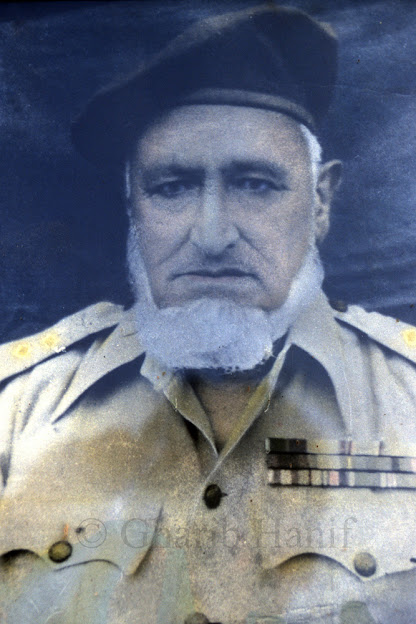Hast-o-Bood Part-21
Chapter IV
Historical background and brief overview of the state of Jammu and Kashmir
Bulbul Shah spent the rest of his ascetic life in the company of Sadruddin and passed away in the year 727 AH, 1366 AD, ie only two years later. Through the efforts of this Sufi preacher of Islam, the Islamic state emerged in the state of Kashmir and after the rule of Sadruddin, the Muslim rulers remained the masters of the black and white state for a total of 494 years till 1819 AD. All of them treated their subjects with sincerity and tolerance, regardless of the country and the nation. He ruled in the hearts of the people because of his participation in all their sorrows and pains, and the kingdom did not have to fall into disrepair until his deeds were full of luxury, misguidance, oppression and violence, and Don't be prejudiced.
Along with Richen Shah, the other person who entered the state of Kashmir was Shah Mir, a tourist from Savad Kanir area. Although he was well versed in all sciences and had the same job in terms of knowledge and grace, he wandered around in a state of poverty and ignorance. Eventually, his fortunes paid off, and President-ud-Din Shah's anthropological nature honored him with the ability to join him and appoint him as the guardian of his minor children when he met the government. He not only began to train the king's princes, but also gave the king a fair go in the affairs of the kingdom. Sadruddin Shah died in the year 747 AH. None of his heirs was able to run the empire. So, taking advantage of his fame, tact and strategy, Shah Mir seized the throne and established the Shahmiri dynasty. This family ruled over Kashmir from 968 AH to 1565 AD and produced a very shrewd, adventurous, intelligent, tolerant and brave king. The most famous of the Shahmiri rulers is Sultan Shahabuddin, whose reign is considered the golden age of Kashmir. In his day lions and goats drank water together and on a pier. The people were prosperous, and the food was plentiful and plentiful. There was peace and order in the whole state. The administration of the state was stable. The prosperity of the country was a far cry. Hazrat Allama Muhammad Iqbal Rah, the sage of the nation, has paid a clear tribute to this Sultan as follows:
Another notable and famous Sultan of the Shahmir dynasty, Sultan Sikandar Khan, known as an idol-breaker, has passed away. The reign of the year was seven hundred and ninety-six AH, thirteen hundred and ninety-three AD, eight hundred and nineteen AH, fourteen hundred and sixteen AD. He was an orthodox, just, peace-loving and broad-minded ruler. His era is also considered a time of conquests and prosperity in Kashmir. Both the shepherds and the peasants lived with great joy and happiness, and there was no such thing as restlessness among the inhabitants of the region.
The last of these dynasties was Batil Jalil and the famous king who was commonly known as [1] Budshah [Bada Shah] or Bhatshah [King of Hindus]. His real name was Sultan Zainal Abidin, the son of Alexander the Great. He was extremely popular among the people and properties due to his good character, good character, architectural taste, administration of the state, public welfare affairs, promotion of fine arts and various virtues. There was a period of justice in his time. His most notable achievement was the construction of Zeina Link [2] on Wular Lake. For its construction, he hired architects and craftsmen from Gujrat district (Punjab) and employed them as government employees and trained the Kashmiri people with them. The golden age of this Sultan was eight hundred and thirty-three AH, fourteen hundred and thirty AD, and eight hundred and seventy-eight AH, fourteen hundred and twenty-seven AD. On his death, the Shahmiri family collapsed. Prostitutes visited the country. Seeing the deteriorating state of the kingdom, Mirza Haider Zughlaf, a cousin of the Emperor of India Muhammad Zaheer-ud-Din Babar, invaded Kashmir and took over the state. For a few years he ruled the region in a paradise, but was brutally murdered by his own traitors and conspiracies. And once again uncertainty has arisen in the state. This time the fate of a fortune-teller, warrior Sardar Ghazi Chick, helped and with the help of his companions, he established the rule of the Chick dynasty over the region by force of arms. The Czech rulers were fanatical Shiites. He used to force people to associate with him and treat other sects very cruelly. During his rule, the honor of any non-Shia was not safe. He was also very strict in national affairs. Fed up with their oppressive and tyrannical rule, the majority of the Sunni believers were forced to emigrate from the state, and the most outspoken, mischievous and oppressive ruler of this family was Yaqub Chuck, who ruled during his reign. A Sunni elder named Musa was forced to accept Shiite beliefs and give a fatwa of his own accord, but this Sufi-minded man did not come under undue pressure from the government.
To be continued ...
[1] ... History of Kashmir, Volume I, Class II, by Muhammad-ud-Din Fauq, page 474
[2] ... Stories of Kashmir, by Muhammad-ud-Din Fauq, page number nineteen
[3] ... Complete History of Kashmir Part II, by Muhammaduddin Fouq, page number 41
[4] ... Complete History of Kashmir, Volume II, Author Muhammad-ud-Din Fauq, Page 157



Comments
Post a Comment